What Are Proteins?
Proteins are one of three macromolecules (Macros) that your body requires from the food you eat. During the digestive process, your body breaks protein down into smaller subunits called amino acids and uses these amino acids and the nitrogen contained within them for various cellular functions. So, eating adequate protein is not only important for weight loss, but also to maintain a healthy body. Because protein is vital to our health, wellness and weight management, understanding a little nutritional science is helpful so that you can create a nutrition plan that includes not only “enough” protein but also the “right” types of protein to ensure you are getting an optimal amount of amino acids. Before we talk about how much protein, l’m going to simply the nutritional science of proteins.
Protein Quality
There are 20 different amino acids that make up proteins and of the 20, 9 are essential amino acids which means they must by supplied through your diet. The other 11 are non-essential amino acids and that means that your body can synthesize them internally so you don’t need to supply them from food. If we’re nitpicking, 4 of those 11 are actually conditionally essential meaning we may not be able to produce them internally during times of illness or extreme stress, like if we’ve suffered a severe burn for example.
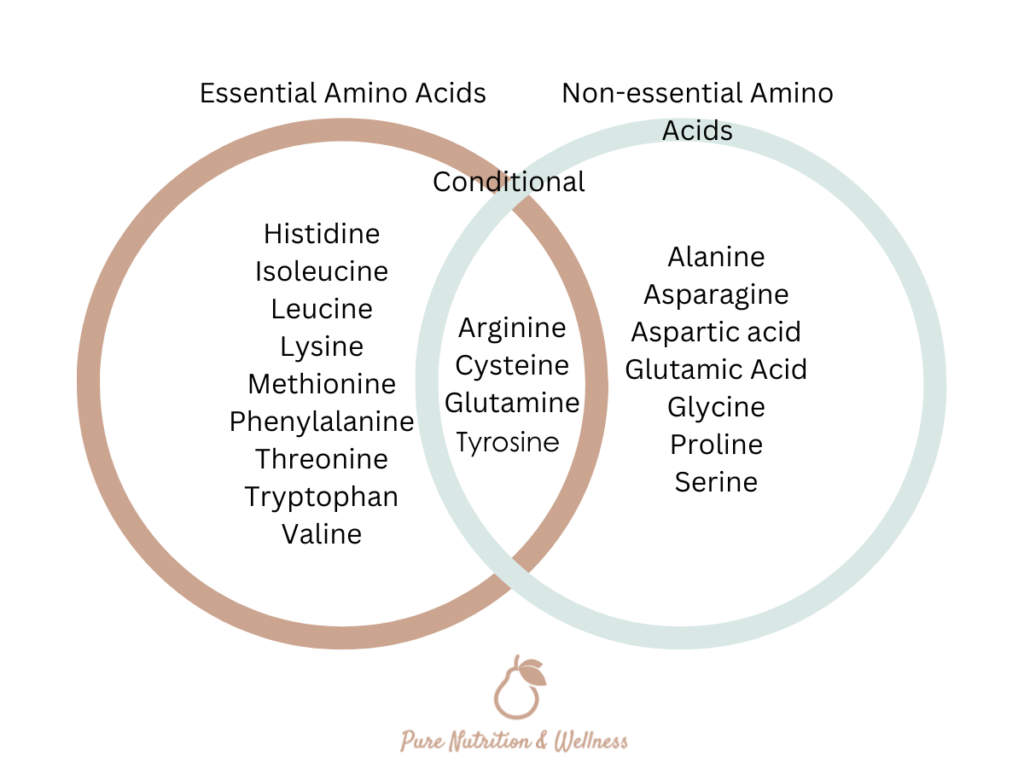
Proteins are classified as Complete or Incomplete based on their amino acid composition. A protein that contains adequate amounts of all 9 essential amino acids is deemed a complete protein while a protein source that is missing some of the essential amino acids is called an incomplete protein. Sources of complete proteins come from foods of animal origin like milk, eggs, cheese, yogurt, meat, poultry and fish. One exception to this is gelatin; though gelatin is of animal origin, it lacks one of the essential amino acids (tryptophan) and is therefore an incomplete protein. Incomplete proteins come from foods of plant origin like legumes, grains, nuts, and vegetables. An exception to this is soy protein; although soy comes from a plant, it is a complete protein source. Quinoa is also a plant-based complete protein, although it’s low in some amino acids, so it’s better labeled ‘nearly complete’. When you consider your protein intake, it’s important to make sure that you are not only consuming adequate protein, but that the protein you’re consuming is supplying adequate amounts of all the essential amino acids. Complete proteins (excluding quinoa) contain the approximate amount of essential amino acids needed by humans.
If you are vegan, consuming adequate amounts of foods with all the essential amino acids requires careful planning. For example, legumes lack the essential amino acid methionine while rice lacks lysine, but when you pair them, together they provide a complete protein. Rice and beans are therefore considered complementary proteins. A general rule-of-thumb when eating a vegan meal: Legumes (lentils, beans, split peas), nuts, or seeds can be eaten with whole grains to create complimentary protein pairs and thus provide all the essential amino acids.
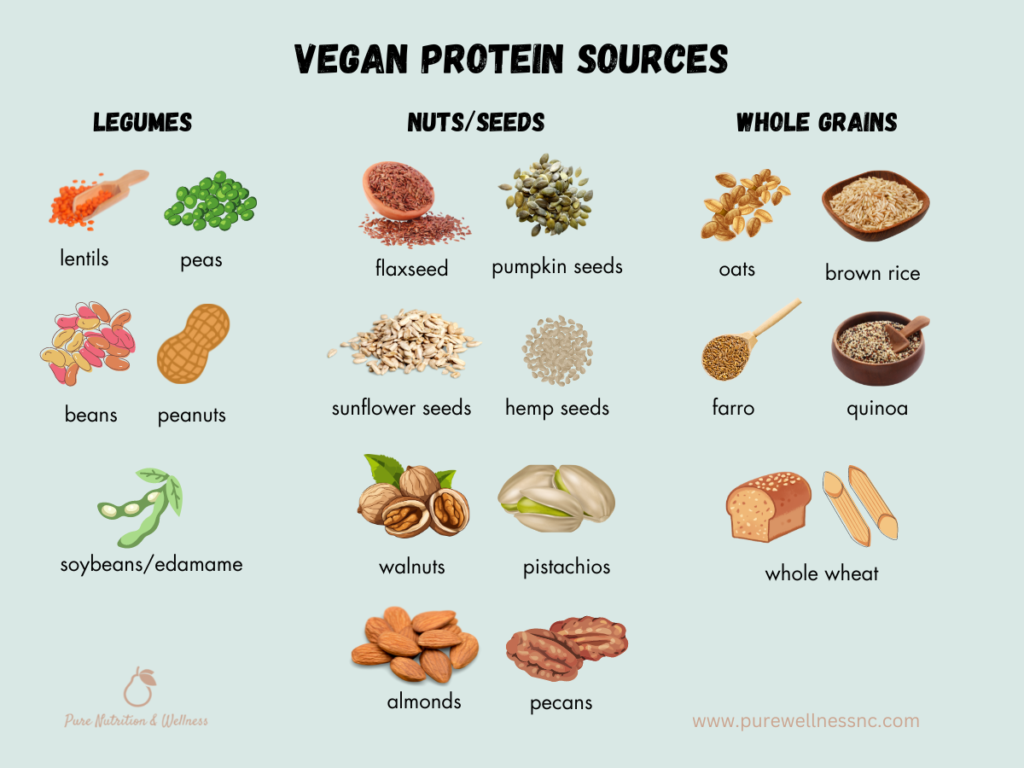
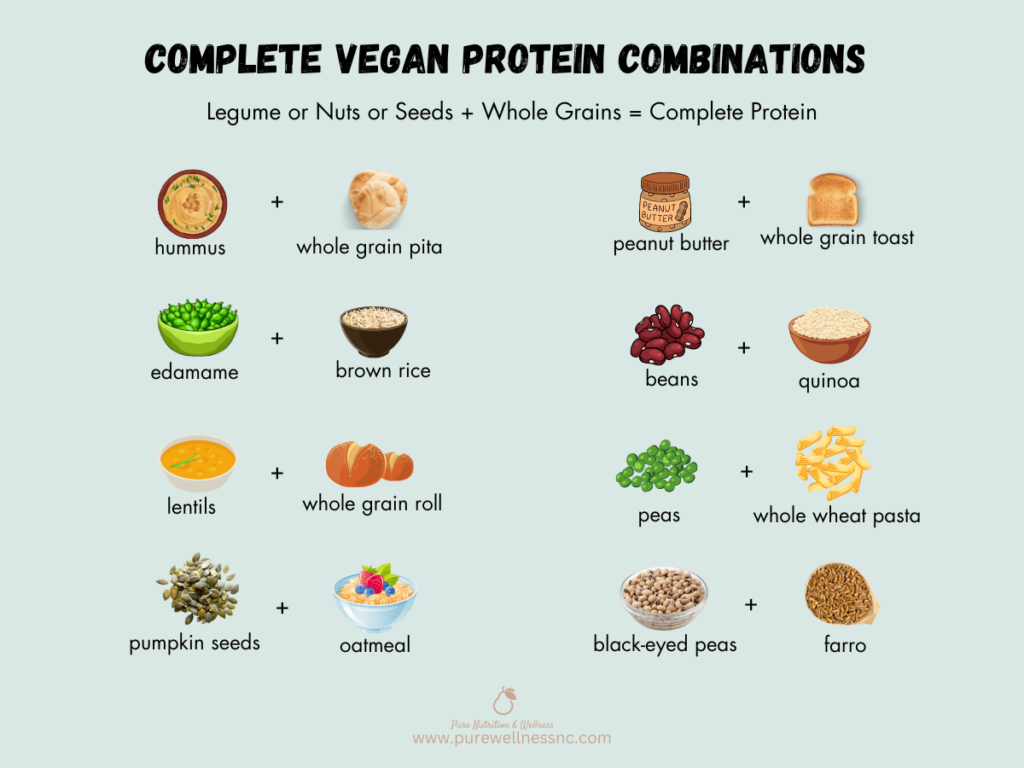
Importance of Protein For a Healthy Body
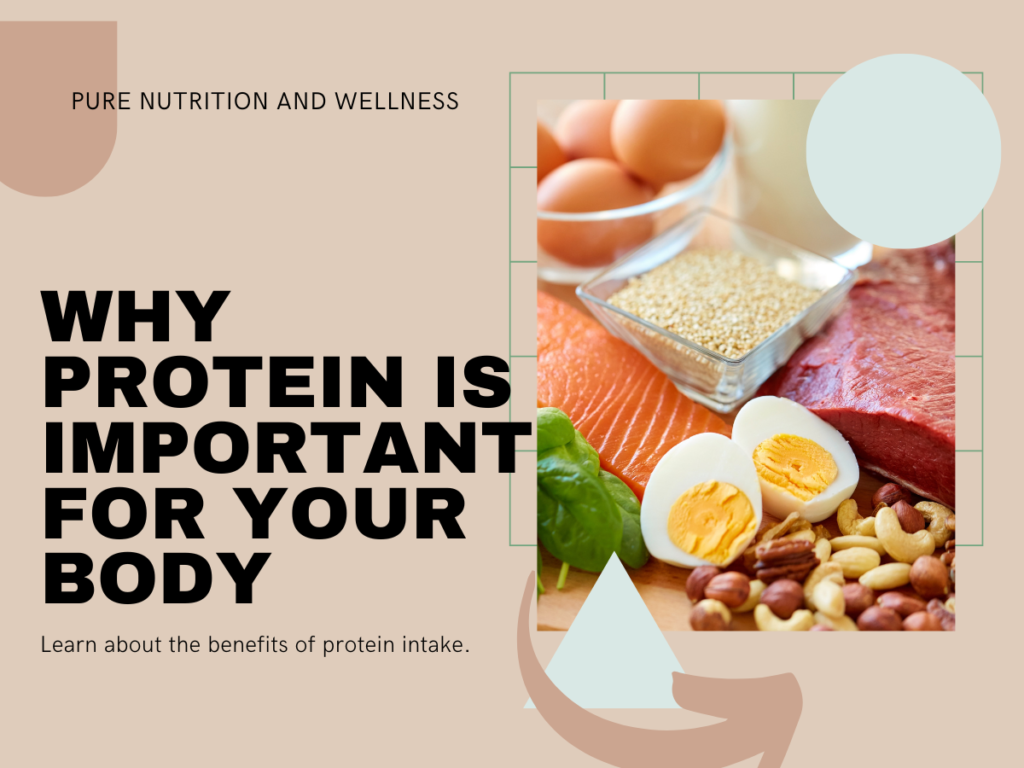
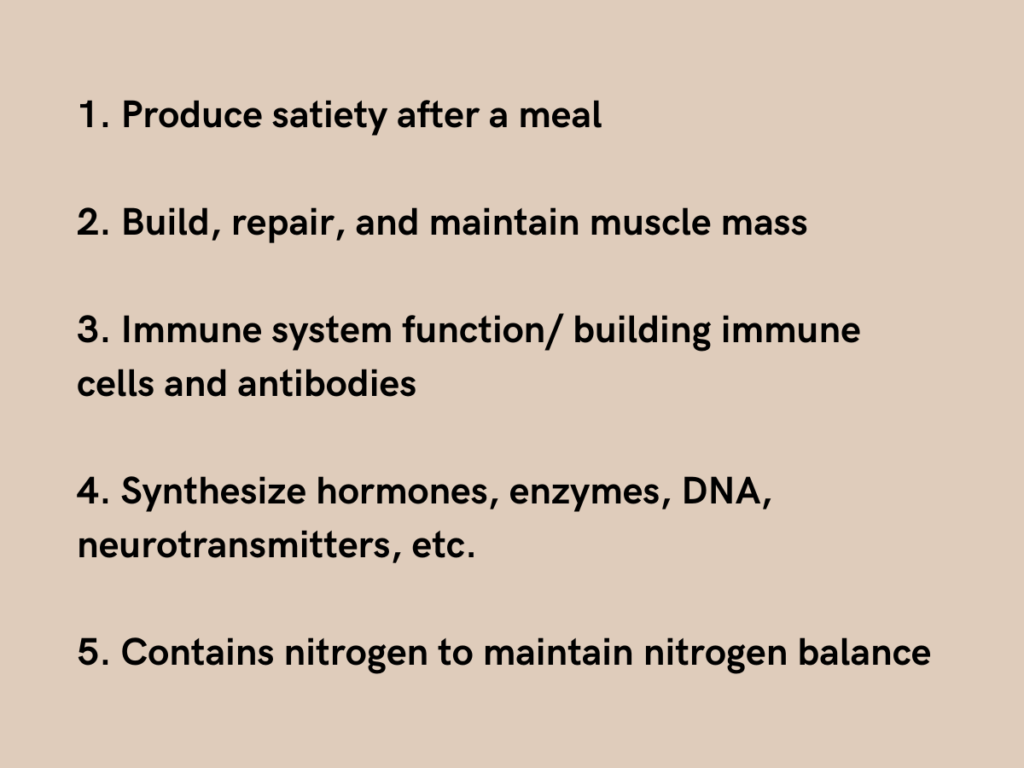
This list could go on and on, but you probably get the point. Protein is massively essential to a healthy human body for reasons that go well beyond maintaining a healthy weight.
How Protein Promotes Weight Loss
Satiety
Protein takes longer to digest in your stomach and therefore allows you to feel satiated longer. Carbs are digested quickly, and a meal that includes only carb foods, like a bowl of cereal for breakfast, will not provide a satiety factor to keep you satisfied until lunch. Add some protein on the side of your breakfast cereal and you might find you avoid the mid morning hunger pangs and cravings.
Blood Sugar Balance
Because protein takes longer to digest, it can help you avoid blood sugar surges that might otherwise occur when you eat carbs. For example, a banana contains simple carbs, so it’s rapidly broken down into sugar units and absorbed quickly into your bloodstream causing a rise in blood sugar. This doesn’t mean that bananas aren’t healthy, and unless you have diabetes, your body can easily manage the blood sugar surge. However, by adding protein, like a teaspoon of nut butter to your banana, you will limit the blood sugar surge because protein will slow the digestive process in your stomach. When you experience a surge in blood sugar, your cells use some sugar for immediate energy, some is stored as glycogen for energy use later, and the excess is stored as fat, so you can see that mitigating blood sugar surges is beneficial to weight management.
Muscle Mass
Protein is required to maintain and build muscle mass. When your diet lacks ample amounts of protein, muscle is broken down to release amino acids and nitrogen needed for other important cellular functions. This results in loss of muscle mass. If you are lifting weights in an effort to build muscle, but not supplying enough protein from your diet, you won’t see any muscle gains. Because muscle is more metabolically active than other types of tissue, maintaining or increasing muscle mass supports weight management.
Higher TEF
The thermic effect of food (TEF) is higher for protein than for carbs or fats. This means that more calories are required to digest protein. However, this caloric difference is unlikely to have a dramatic impact on weight loss.
How Much Protein Should You Eat?
Protein and amino acid requirements vary based on age, body size, physiologic state (higher needs during times of illness and recovery), and body composition goals. The Recommended Dietary Allowance (RDA) represents the average daily amount a healthy person needs to prevent deficiency. For adults the RDA is .8 grams per kilogram of body weight.
Most of us here in the USA measure our body weight in pounds not kilograms, so to calculate your protein RDA, first we need to convert our weight into kilograms. This is easily done by dividing your weight in pounds by 2.2. Then to determine your protein RDA, multiply you weight in kilograms by .8.
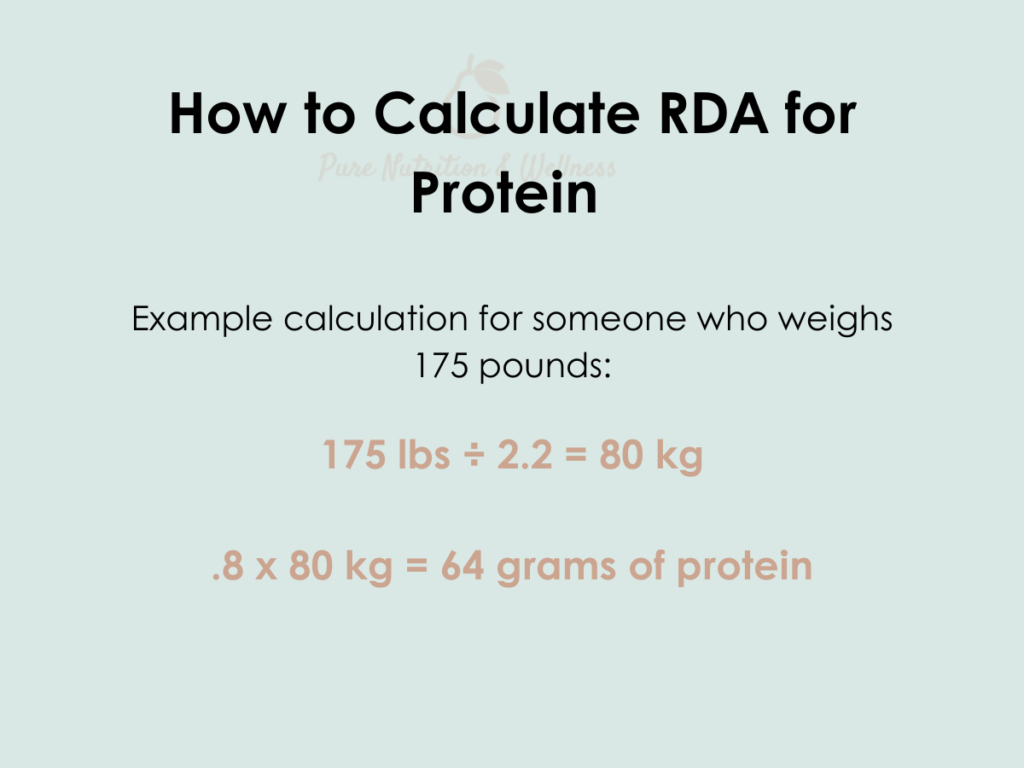
So 64 g is the absolute minimum amount of protein a 175 pound person would need per day to prevent deficiency. If you are sick, pregnant, elderly, stressed, a competitive athlete, trying to lose weight or trying to build and maintain muscle mass, you will benefit from more protein beyond the RDA.
An ideal range for a person who is an athlete, trying to build muscle mass, or trying to lose weight is 1.2 – 2 grams of protein per kilogram of body mass. To calculate this range, again divide your weight in pounds by 2.2 to identify your weight in kilograms and then multiply that number first by 1.2 and then by 2 to get an optimal protein range.
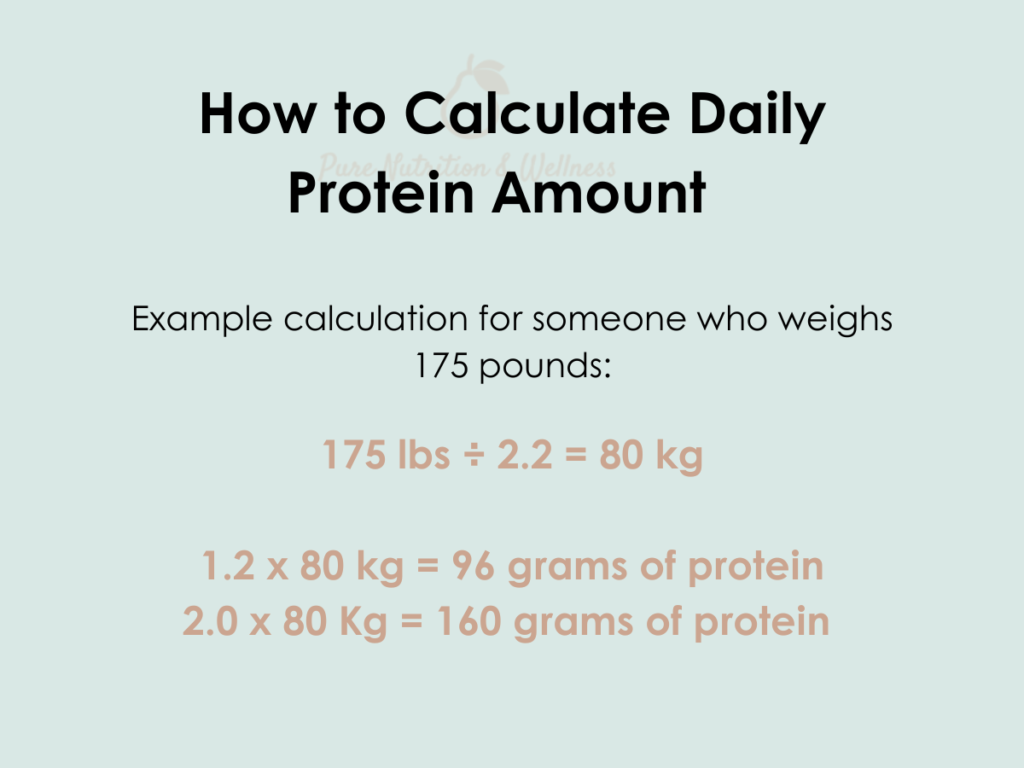
Between 96 and 160 grams of protein is optimal for someone who weighs 175 pounds and is an athlete or working on body composition goals. The more training an athlete does, the higher the multiplier used to calculate protein goals.
Another method to consider when determining how much protein is appropriate for you is a broad recommendation that protein should constitute about 10 – 35% of your daily calories. For that to be helpful, first you have to have some idea of how many calories you consume each day which can be determined using a simple tracking app like cronomenter or by measuring your portions, reading nutrition labels and doing some simple math. Let’s look at an example for someone who eats about 2,000 calories per day.

Based on this calculation, consuming somewhere between 50 grams and 175 grams of protein should meet the needs of someone who consumes about 2,000 calories per day. Of course, make sure you are eating at least the RDA, so if 10% puts you below the RDA for protein, know that you likely need more protein to meet your needs. Most people will find their optimal intake somewhere within this 20 – 35% range, with body builders or people with extreme body composition goals possibly needing protein in excess of 35% of total calories. For those trying to build muscle, optimal intake is likely toward the higher end of this range (between 25 and 35% of total calories coming from protein).
How to Determine Optimal Protein Intake
The optimal amount of protein is very individualized and as you decide how much protein you want to aim for, it’s important to consider the difference between optimal protein intake, enough protein and a doable amount of protein. Most people in the US are eating enough protein (meeting their RDA), but for many people, an optimal amount of protein is both more than the RDA and more than the amount of protein they are currently eating. The key is finding the balance between an optimal amount of protein and what is doable for you based on your preferences.
I recommend using a tracking app or using food labels to determine how much protein you are already consuming and if you are below your RDA, begin increasing protein intake until you can easily reach your RDA each day. If you are already eating adequate protein but you’d like to increase more, look for what feels doable to you and consider increasing in small increments- for example, focus on going from 90 grams per day to 100 grams per day rather than going from 90 to 150 grams. Setting goals to eat outrageously large amounts of protein compared to your normal intake will feel difficult and lead to giving up. Pick one meal or snack and decide how you can easily increase your protein at that meal. If you want some tips for increasing your protein intake, check out this article. If you want help determining your optimal protein intake or crafting a plan to hit protein goals, reach out to Pure Nutrition and Wellness to work with a dietitian who can help you design a customized protein plan.
As you consider your protein intake, pay attention to your body’s signals. If you’re lifting weights, are you successfully building muscle (you don’t need a body scan to determine this, do you feel stronger?)? If you are, then you’re most likely getting optimal protein.
Some signs that indicate you’re protein intake is suboptimal include:
- Seeing muscle loss or having an inability to increase muscle mass despite eating enough calories and strength training
- Having hunger cravings shortly after eating a meal
- Slow recovery from injury or wounds
If you notice any of these symptoms, consider increasing protein intake and ensuring that your protein foods are supplying all the essential amino acids.
How Much Protein is Too Much
A Tolerable Upper Intake Level (the largest amount that could be eaten without risk of toxicity or adverse health effects) has not been established for protein, and the long term effects of a high protein diet (greater than 35% of total calories from protein) has not been studied enough. The biggest risks of a high protein diet is dehydration and kidney problems. Dehydration could occur with extremely high protein intake because of increased need to excrete nitrogenous waste from metabolizing proteins, but with adequate water intake to prevent dehydration, this doesn’t pose a major threat. Kidney damage from a high protein diet in a person without any pre-existing kidney disease is rare. So, unless you are eating crazy high amounts of protein, it’s unlikely that increasing protein intake will cause harm to a healthy person.
